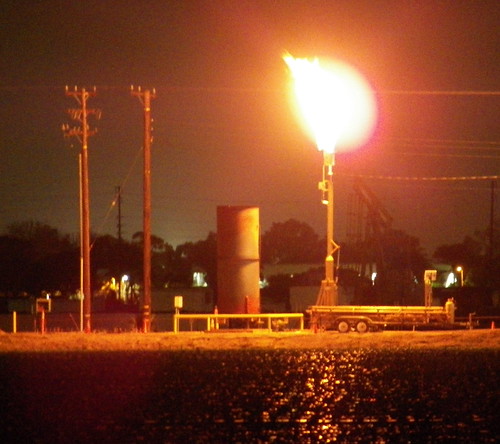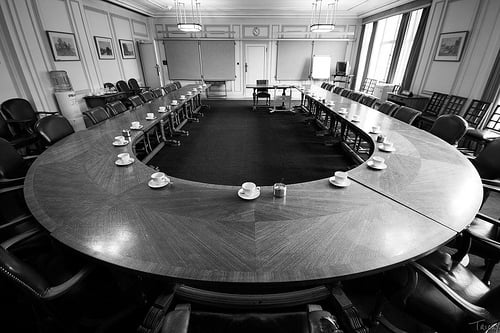The Resource Conservation and Recovery Act (RCRA) assigns the US Environmental Protection Agency (EPA) and state hazardous waste agencies regulate “hazardous wastes,” including categories defined as “universal wastes” that are subject to reduced management requirements. EPA defines five categories, but also allows states to define additional categories (I wrote about this here). California’s Department of Toxic Substances Control (DTSC) has just proposed to add a new category of state-regulated universal waste covering “photovoltaic [PV] modules” to its regulations under the state’s Hazardous Waste Control Law (HWCL). The remainder of today’s blog summarizes these proposed universal waste PV requirements.
Read MoreAudit, Compliance and Risk Blog
California Proposes Universal Wastes Rules For Photovoltaics
Posted by Jon Elliott on Tue, Jun 11, 2019
Tags: California Legislation, Environmental risks, Environmental, EHS, EPA, Hazcom, RCRA
The Resource Conservation and Recovery Act (RCRA) assigns the US Environmental Protection Agency (EPA) to define and then regulate “hazardous wastes.” EPA applies its considerable discretion to separate hazardous wastes into categories subject to distinct waste management requirements. One basis for these categorizations is relative risk – the more hazardous the waste the greater the controls required, and the smaller the threshold quantities necessary to trigger regulation. Beginning in 1995, EPA has defined a limited set of very common lower-risk wastes as “universal wastes,” and made them subject to special rules intended to encourage recycling (40 CFR part 273). The rest of this note summarizes universal waste requirements.
Read MoreTags: Health & Safety, Environmental risks, Environmental, EPA, Hazcom, RCRA
Occupational Safety and Health Review Commission Confirms Employer’s General Duty Clause Applies to Workplace Violence
Posted by Jon Elliott on Tue, May 14, 2019
On March 4, 2019, the U.S. Occupational Safety and Health Review Commission (Commission) issued its first affirmation of a citation and penalty issued by the Occupational Safety and Health Administration (OSHA) to punish a health care provider under the Employer’s General Duty Clause for failing to take adequate steps to prevent workplace violence. OSHA has issued citations under this Clause since 2012, but this is the first time that the Commission has confirmed one of these citations on appeal.
Read MoreTags: Business & Legal, Employer Best Practices, Health & Safety, OSHA, Employee Rights, Workplace violence
EPA Requiring Notice and Review Before Lapsed Uses of Asbestos Can Be Reintroduced
Posted by Jon Elliott on Tue, May 07, 2019
The Environmental Protection Agency (EPA) is continuing its renewed reviews of asbestos products, and has just issued a requirement that “discontinued” uses receive new review and approval before they can re-enter commerce in the United States. Formally, EPA has issued a Significant New Use Rule (SNUR) covering these products (I wrote about the SNUR proposal here).
Read MoreTags: Health & Safety, Environmental risks, Environmental, EPA
Trump Administration Further Tightens Controls Over Agency Rulemaking
Posted by Jon Elliott on Tue, Apr 30, 2019
The Trump Administration has taken another step to centralize its control over federal agencies’ rulemakings and policy-setting. Rulemaking has always reflected tensions between the politicians who adopt laws, and the agency staff who interpret and apply them through formal rules and information guidance and procedures. Depending how entrenched career staff are in their agencies, there may also be tensions between the elected executive (President, governor, etc.) and his or her agencies, even after his or her appointees are nominally in charge.
Read MoreTags: Business & Legal, EHS, EPA
Bureau of Land Management Amends Methane and Waste Prevention Rule
Posted by Kathy McKinney-Tovar on Tue, Apr 23, 2019
The Bureau of Land Management (BLM) issued a final rule (the 2018 rule) on September 28, 2018 (83 FR 49184) that revised, rescinded, or replaced requirements in its “Waste Prevention, Production Subject to Royalties, and Resource Conservation” (the 2016 rule) (81 FR 83008). The 2016 rule, also known as the Methane and Waste Prevention Rule, required operators of onshore federal and Indian (other than Osage Tribe) leases to take various actions to reduce the waste of gas. The rule established clear criteria for when flared gas qualified as waste and was, therefore, subject to royalties, and also clarified which on-site uses of gas were exempt from these royalties. Prior to the 2016 rule, provisions related to venting, flaring, and royalty-free use of gas were contained in the agency’s 1979 Notice to Lessees and Operators of Onshore Federal and Indian Oil and Gas Leases, Royalty or Compensation for Oil and Gas Lost [NTL–4A]).
Read MoreTags: Hazcom, Oil & Gas, site auditing
If You’re In A Flood Zone, Your Insurance Options May Be Changing
Posted by Jon Elliott on Tue, Apr 16, 2019
Millions of people live and work in flood-prone areas, and rely on federal insurance to facilitate their activities. The Federal Emergency Management Agency (FEMA) administers the National Flood Insurance Program (NFIP), under which FEMA defines which flood-prone areas qualify for insurance. In March, FEMA announced plans to change its definitions and underwriting; meanwhile legislation has been introduced in Congress to change NFIP. Depending how these changes turn out, thousands of locations will gain or lose eligibility, and the costs of NFIP insurance could change considerably. As climate change exacerbates the likelihood and severity of floods, the importance of these changing provisions grows – for participants and for the general tax-paying public who often end up subsidizing them.
Read MoreTags: Business & Legal, Environmental risks, Environmental, Insurance, Insurance Claims
But there are many other potential risks that could result in lawsuits against corporate directors and officers (D&O). These include an ensuing drop in stock price after an incident, mishandling of personal information, effects of the opioid crisis, sexual harassment allegations, and pollution risk created by the use and disposal of dangerous chemicals used in manufacturing. Even liability suits for mass shootings in the workplace can find their way to directors and officers.
Insurance designed to protect corporate directors and officers has been on the market for almost a century, but it was not until the scandals of Enron and WorldCom in the early 2000s that many executives became more aware of the need for liability protection. While we all remember those two bankruptcies, many may not recall that directors of WorldCom had to contribute their personal assets to settle the D&O claims that ensued.
Today, the risk factors motivating the purchase of additional D&O insurance are compelling, but the type of coverage purchased has a material impact on the limits available to protect directors from liability. As corporate officers reevaluate their current D&O coverage, it is important to thoroughly understand the type of coverage purchased and to quantify a board’s potential risk or “claim severity.”
Understanding and Quantifying D&O Risk
In 2017, 9% of public companies in the United States faced securities class actions—an all-time high. These are highly correlated with ensuing D&O claims, and the risks facing every company continue to grow. A U.S. Supreme Court ruling late last year, for example, now enables litigants to pursue class action suits regarding initial public offerings in state courts, which are commonly perceived to be more sympathetic to plaintiffs. These suits are also generally more expensive to defend because they cannot be consolidated and must be negotiated or litigated case by case.Despite this increase in risk and liability exposure, the market for D&O insurance continues to be soft, with low premiums relative to the potential exposure. There continues to be ample competition for this business, preventing any meaningful increase in pricing. As such, this is a good time for companies to purchase additional coverage as pricing may be at a low point, especially in the excess layers. That said, not all D&O coverages are alike. An understanding of the coverages and their differences is essential for decision-makers looking to evaluate risk mitigation options.
Differences In D&O Coverage
With the introduction of the Private Securities Litigation Reform Act (PSLRA) in 1995, there followed a change in D&O coverage available in the marketplace. PSLRA is a federal law enacted in response to the perceived increase in frivolous class action suits alleging securities fraud under the Securities Act of 1933 and the Securities Exchange Act of 1934. The key features of PSLRA are:
Read MoreTags: Business & Legal, Workplace violence, corporate social responsibility, directors, directors & officers
EPA’s New Chemical Review Priorities Should Encourage User Reviews Too
Posted by Jon Elliott on Tue, Apr 09, 2019
The Environmental Protection Agency (EPA) has just proposed to assign chemical review priorities for 40 chemicals, as required by the 2016 Amendments to the Toxic Substances Control Act (TSCA; the “Frank R. Lautenberg Chemical Safety for the 21st Century Act”). As required by the 2016 Amendments, the proposal identifies 20 high priority chemicals for evaluation within three years, and 20 low priority chemicals that do not require further evaluation. Once each evaluation is completed, EPA is to determine appropriate regulatory requirements. Organizations that manufacture, process or use any of these chemicals should follow the rulemaking and evaluation process(es), and consider possible substitutes in order to reduce hazards and possible regulatory changes after completion of each relevant evaluation.
Read MoreTags: Environmental risks, Environmental, EPA, Hazcom, tsca
The Environmental Protection Agency (EPA) has completed a long review, and reaffirmed the primary National Ambient Air Quality Standard (NAAQS) for oxides of sulfur (SOX; usually measured as sulfur dioxide (SO2)). This is the first review of the primary SOX NAAQs since 2010 (primary standard – EPA did not review the secondary SOX NAAQS established in 2012).
Read MoreTags: Environmental risks, Environmental, EPA, Greenhouse Gas, ghg, SOX, CAA










